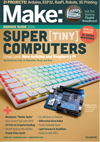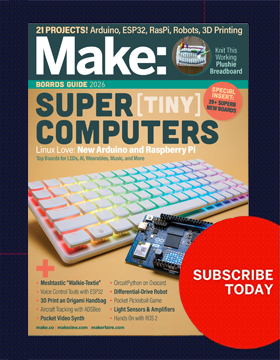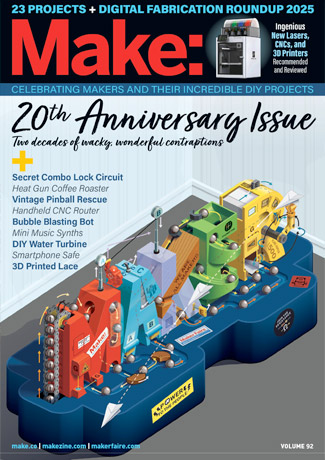
Tips of the Week is our weekly peek at some of the best making tips, tricks, and recommendations we’ve discovered in our travels. Check in every Friday to see what we’ve discovered. And we want to hear from you. Please share your tips, shortcuts, best practices, and tall shop tales in the comments below and we might use your tip in a future column.
Glue Tip Flow Tip
 Have you ever noticed that many glue bottles have stepped tips to their applicators? It may be obvious, but still worth pointing out that these are there to allow you to cut the tip so as to control the amount of adhesive you wish to apply.
Have you ever noticed that many glue bottles have stepped tips to their applicators? It may be obvious, but still worth pointing out that these are there to allow you to cut the tip so as to control the amount of adhesive you wish to apply.
John Park’s Guide to Cardboard

Know Where Your Tool (and Your Material) Will Go
We have talked before about thinking through work procedures involving motorized tools (or any tool that is in motion). You want to think through all of the steps you are about to undertake and to anticipate any safety issues and problems that could occur (e.g. while cutting, drilling, sanding, planing, 3D printing, whatever). Related to this is acquiring some appreciation for the physical dynamics of the tool and what might happen if the tool or the material misbehave. I have long believed that a huge part of save work practices in a workshop is gained by having an innate (or studied) understanding of the physics of tools in motion as they come into contact with materials and where those objects might end up if something goes wrong. As you work with a tool, you want to be thinking about things like the direction of its rotation (or other actuation), its speed, its point of contact with the material, its possible points of failure, where the tool and the material are likely to end up if there’s an accident. All of this will help keep you out of the path of failure and safer should something go wrong.
More on Lineman’s Splices, Soldering to NASA Standards

Intro to Clamps

Soda Caps and Contact Lens Cases

[From my new book, Make: Tips and Tales from the Workshop]
MAKING A SUPER CLEAN CABLE SPLICE
In a quick technique tutorial called “Super Clean Cable Splicing” on Becky Stern’s YouTube channel, she shows off the best way of stripping, soldering, and shrink-tubing a cable splice. The trick is to offset the wire joins so that, when you add heat-shrink tubing to the individual wires and then a tube over the entire splice, you don’t get a big lump in the cable. [BS]
[Watercolor by Richard Sheppard]
*** If you get a copy of my book, please take a picture of yourself holding it, tag me, and use the hashtag #tipsandtales. Besides being a book about tips, this is also a book about the human side of tools and how they’re used. Tips and Tales itself is a tool, so I’d like to see the humans who are using it.
ADVERTISEMENT







